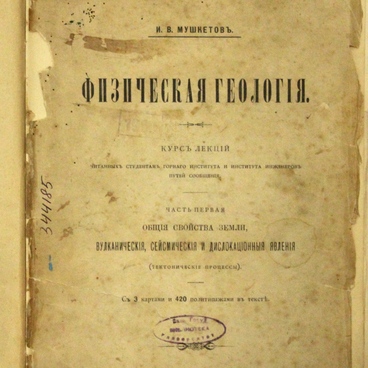The ‘Ishimbay Thermal Power Plant’ drawing board was created using the collage technique, with its wooden base emblazoned with the red logo of the Soviet Bashkirenergo company, as well as other inscriptions, dividing lines, and photographs. This work illustrates a major milestone in the electrification of the Ishimbay region, which would not be possible without the Ishimbayskiye ElektrIcheskiye Seti company, or IES, which was established in 1936 and whose name is lettered in black right below the red logo.
Essentially, the history of IES began with the discovery of Ishimbay oil in 1932. It was the 1930s that marked the construction of the first boiler systems, which used steam to bring the drilling rigs into motion. In the second half of the 1930s, the Ishimbay region launched its Central Power Plant, and in the early 1940s, the plant stepped up its capacity. By the late 1950s, the Ishimbay Central Power Plant was already responsible for providing the city with heat in the cold season.
The maintenance of the heat supply network was assigned to the newly organized Network Area No. 7 and the public works department. However, by the mid-1960s, the existing heat supply system was not enough to fully meet the needs of the city, complete with its newly constructed and still developing industrial enterprises and the rapidly growing residential sector. Ishimbay’s heat supply problem became critical, demanding urgent measures to transfer the control over the heat supply service from the public works department to an independent organization. In light of this dire situation, the city administration requested permission from the Ministry of Municipal Affairs and Housing of Bashkiria to establish a self-financing heat supply network management office in the city.
The ministry agreed and, in 1965, issued a decree ordering the creation of an enterprise to take control over the heat supply network. Its first director was G. F. Nagaev, who was faced with one of the most challenging periods in the development of the city’s heat supply network. Under his leadership, much progress was made to ensure sufficient heat supply capacities for the future, automate the delivery of thermal energy from boiler houses, and introduce remote pump control and monitoring systems. His successors in this position had the equipment of the plant’s repair shop updated to ensure better maintenance and elimination of emergencies. In 40 years, the underground world of Ishimbay’s pipework has reached a length of 78.9 kilometers of double pipes. This includes a total of 60.1 km of pipelines of the heat supply network, as well as the 18.8 km of pipes of the hot water supply system. The enterprise employed hundreds of qualified specialists that were dedicated to their work and loved their profession.
Essentially, the history of IES began with the discovery of Ishimbay oil in 1932. It was the 1930s that marked the construction of the first boiler systems, which used steam to bring the drilling rigs into motion. In the second half of the 1930s, the Ishimbay region launched its Central Power Plant, and in the early 1940s, the plant stepped up its capacity. By the late 1950s, the Ishimbay Central Power Plant was already responsible for providing the city with heat in the cold season.
The maintenance of the heat supply network was assigned to the newly organized Network Area No. 7 and the public works department. However, by the mid-1960s, the existing heat supply system was not enough to fully meet the needs of the city, complete with its newly constructed and still developing industrial enterprises and the rapidly growing residential sector. Ishimbay’s heat supply problem became critical, demanding urgent measures to transfer the control over the heat supply service from the public works department to an independent organization. In light of this dire situation, the city administration requested permission from the Ministry of Municipal Affairs and Housing of Bashkiria to establish a self-financing heat supply network management office in the city.
The ministry agreed and, in 1965, issued a decree ordering the creation of an enterprise to take control over the heat supply network. Its first director was G. F. Nagaev, who was faced with one of the most challenging periods in the development of the city’s heat supply network. Under his leadership, much progress was made to ensure sufficient heat supply capacities for the future, automate the delivery of thermal energy from boiler houses, and introduce remote pump control and monitoring systems. His successors in this position had the equipment of the plant’s repair shop updated to ensure better maintenance and elimination of emergencies. In 40 years, the underground world of Ishimbay’s pipework has reached a length of 78.9 kilometers of double pipes. This includes a total of 60.1 km of pipelines of the heat supply network, as well as the 18.8 km of pipes of the hot water supply system. The enterprise employed hundreds of qualified specialists that were dedicated to their work and loved their profession.

